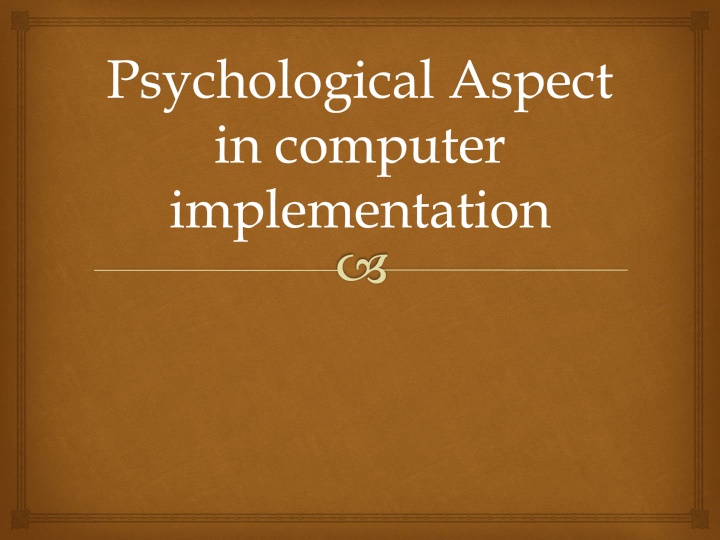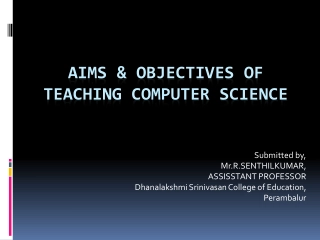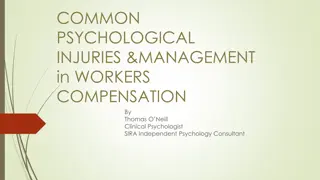
Impact of Information Systems on Organizations and Business Firms
Explore the psychological aspect and forces driving change in organizational environments, including the impact of information systems on economic, organizational, and behavioral aspects. Discover how technologies, people, and competition influence organizational transformations in the digital age.
Download Presentation

Please find below an Image/Link to download the presentation.
The content on the website is provided AS IS for your information and personal use only. It may not be sold, licensed, or shared on other websites without obtaining consent from the author. If you encounter any issues during the download, it is possible that the publisher has removed the file from their server.
You are allowed to download the files provided on this website for personal or commercial use, subject to the condition that they are used lawfully. All files are the property of their respective owners.
The content on the website is provided AS IS for your information and personal use only. It may not be sold, licensed, or shared on other websites without obtaining consent from the author.
E N D
Presentation Transcript
Psychological Aspect in computer implementation
Forces for Change An organization faces pressures for change from numerous sources: It is difficult to predict what types of pressures for change will be the most significant in the next decade because the complexity of events and the rapidity of change are increasing. Four categories of pressures that are likely to have major effects on organizations include: People, technology, information processing and communications, and competition.
Pressures for Organizational Change People Baby Boomers comprise approximately 56 million people born between 1945 & 1960. Special characteristics of this group include distinct purchasing patterns that affect product and service innovation, technological change, and marketing activities. Technology Technology development is increasing so rapidly in almost every field making it difficult to predict which products will dominate 10 years from now.
Pressures for Organizational Change (continued) Information Processing and Communications In the future, people may not need offices as they work with computers and communicate through new data transmission devices. Competition Most markets are international because of decreasing transportation and communication costs. The Internet is creating new opportunities overnight.
HOW INFORMATION SYSTEMS IMPACT ORGANIZATIONS AND BUSINESS FIRMS How Information Systems Impact Organizations and Business Firms Economic Impacts Organizational and Behavioral Impacts
HOW INFORMATION SYSTEMS IMPACT ORGANIZATIONS AND BUSINESS FIRMS Economic Impacts: IT changes both the relative costs of capital and the costs of information. Information systems technology is a factor of production, like capital and labor.
HOW INFORMATION SYSTEMS IMPACT ORGANIZATIONS AND BUSINESS FIRMS Organizational and Behavioral Impacts IT Flattens Organizations Postindustrial Organizations -- task force-networked Virtual Firms Increasing Flexibility of Organizations Organizational Resistance to Change
Why we need to know the psychological aspect in implementing Information System?
Actors in IS Implementation Actors in Information System Implementation : User Operational Management Expectation for problem solving IS Professional Vendor Needs to sale the product Customer need to serve, error free.
Lewins Three-Step Change Model Unfreezing Moving Refreezing
Lewins Three-Step Model For Implementing Change Unfreezing Change efforts to overcome the pressures of both individual resistance and group conformity. Moving Efforts to get employees involved in the change process. Refreezing Stabilizing a change intervention by balancing driving and restraining forces.
Change Resistance Caused of Change Rejection : 1. Functional Changes 2. Organization Structure Change 3. Procedure Modification 4. New Culture --- > Bad Culture tranparent
Change Resistance Dealing with Rejection : 1. Explain the weakness of current system 2. Explain how bad current system in the future without new system 3. Explain benefit for individual staff, group or corporate from new system 4. Ask users to give input about their expectation to new system 5. Regular communication with user about difficulties and needs 6. Training 7. Free from routine and attractive task 8. More experience with better career 9. Computerized system doesn t mean employees eviction, but will increase personnel production capacity.






















